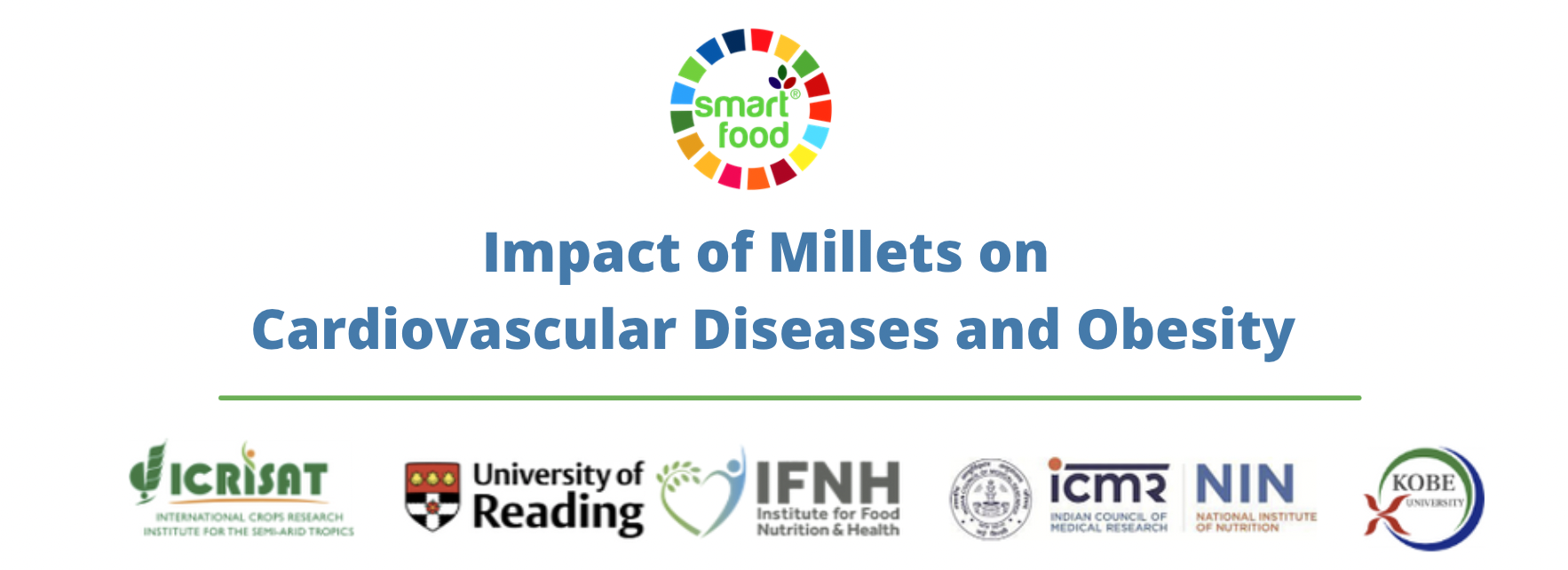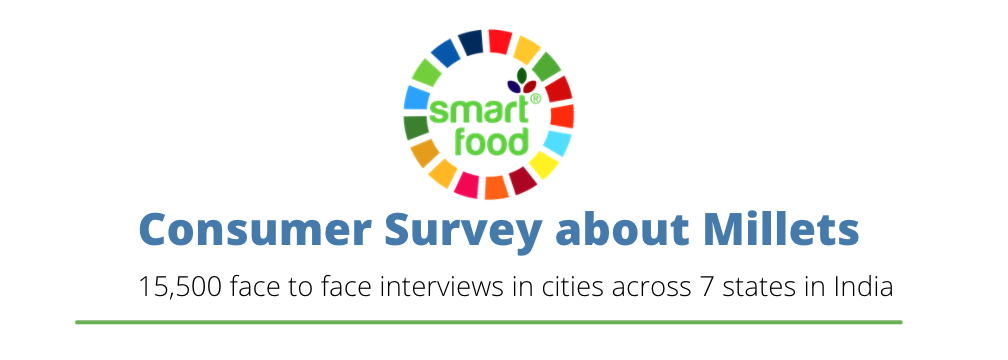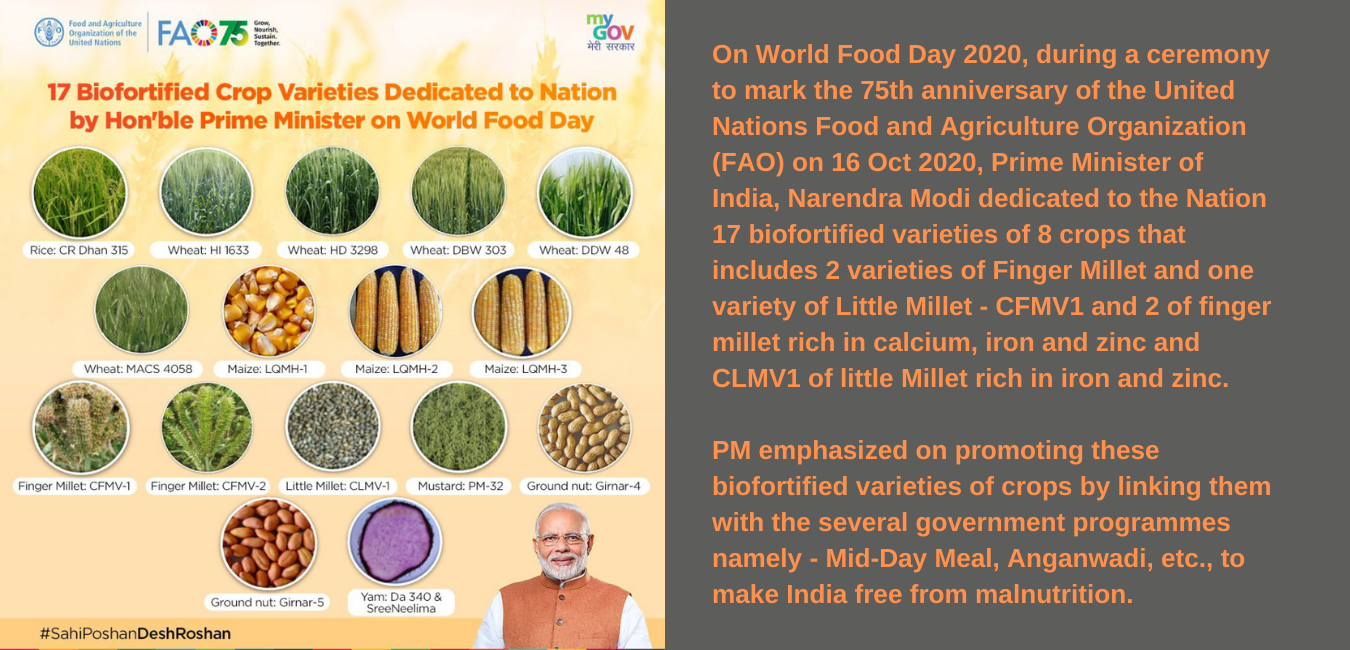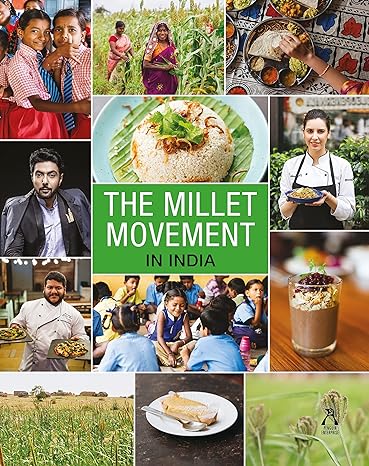Keeping the Millet Drive Alive: The Millet Movement In India Book
This Coffee Table Book features the millet movement sweeping India, captivating consumers, entrepreneurs, chefs, NGOs, and the government. Read the inspiring stories about how this humble ancient grain is transforming lives and explore the recipes crafted by chefs and nutritionists.

Harnessing the Power of Millets in the Global Fight Against Diabetes
Every year, World Diabetes Day provides an opportunity to pause and truly take stock of a reality that affects over 400 million people globally. Diabetes-related deaths have risen by 70% since 2000, and the surge in global diabetics is projected to reach a staggering 700 million people by 2045.
Evidence on health benefits of millets:

About the Study
Type of analysis: Scientific studies undertaken on millets in relation to hyperlipidaemia were widely searched and collated. A systematic review and meta-analysis was conducted to identify any evidence of positive or negative effects from the impact of consuming millets. This included impacts on: total cholesterol (TC), triacylglycerol (TG) , high-density lipoprotein cholesterol (HDL-C), low-density lipoprotein cholesterol (LDL-C) and very-low-density lipoprotein cholesterol (VLDL- C).
A total of 19 efficacy studies on humans were found and analysed.
Millets studied: In total 5 types of millets were included in the studies: finger millet, foxtail millet, barnyard millet, sorghum and/or a mixture of millets (finger millet and little millet)
How millets were consumed: Millets were included in meals and in a variety of forms. Some included millet biscuits, burfi (sweet), porridge, buns, boiled in water (similar to rice), roti (flatbread), dumpling, upma or a drink. The amount of millets provided to the intervention groups varied from 50 g to 200 g (dry weight basis) either in one or divided into two meals per day.
Sample Results
Study shows consumption of millets reduce total cholesterol, triacylglycerol and BMI.
-
- Reduced total cholesterol by 8%, lowering cholesterol in the people studied, from high to normal levels.
- Resulted in nearly a 10% decrease in low and very low-density lipoprotein cholesterol (commonly viewed as ‘bad cholesterol’) and triacylglycerol levels in blood. Through these reductions, the levels went from above normal to normal range.
- Led to a slight increase in what is ‘commonly’ called the good cholesterols (high-density lipoprotein cholesterol).
- Lowered blood pressure with the diastolic blood pressure decreasing by 5%.
- Reduced BMI by 7% in people who were overweight and obese, showing the possibility of returning to a normal BMI.
- Additional data collected from other sources showed that millets are much higher in unsaturated fatty acids with 2 to 10 times higher levels than refined wheat and milled rice, as well as being much higher than whole grain wheat.
The largest ever systematic review of studies published in scientific journals that were conducted on millets and their impact on diabetes.
This included:
-
-
- 80 studies on humans from 11 countries of which 65 were eligible for both meta-analysis and regression analysis, and included about 1,000 people studied
- Diabetic, pre-diabetic and non-diabetic individuals
- 11 types of millets, with various processing.
-
Study Results
Millets Have Low GI : The mean GI of milletsacross all cooking methods is 52.7 ± 10.3
Consumption of millets had the following impacts:
-
- For diabetic individuals: blood glucose levels were lowered by 12% and 15% for fasting and post-meal respectively. Individuals’ blood glucose level went from diabetic to pre-diabetic level
- For diabetic individuals: HbA1c (blood glucose bound to hemoglobin) was lowered by an overall average of 15% d
- For pre-diabetic individuals: HbA1c was lowered up to 17% and individuals’ HbA1c level went from prediabetic to normal status
Previously released study:

About the Study
This was conducted in August 2017 and forms an important baseline for tracking consumer perceptions and effectiveness of marketing activities.
Sample Results
Largest reasons for consuming millets
- ‘I have a health problem’ (nearly 30% of people stating this)
- ‘I want to lose weight’ (15.1%)
- ‘I like the taste’ (about 14.6%)
The major reason the respondents did not eat (more) millets
- It is not eaten at home’, expressed by nearly 40% of the respondents
- ‘Don’t like the taste’ expressed by nearly 22%
- ‘Price is high’ (13%)
- ‘It takes a long time to cook’ (8%)
Millets are Smart Food


Newly Launched Millet Food Finder Shows a Revolution is Underway
Millets have sometimes been hailed as the next quinoa but researchers collating a global database of millet products have found this ancient grain to be orchestrating a silent food revolution that could see quinoa outstripped. The “Millet Finder”, launched today (25 Nov 2020), discovered a surge in the use of millets, with over a thousand modern convenient products in a very wide range, across all the inhabited continents. Go to Millet Finder or Read More in the Media Release
Good for You
- Finger millet has 3 times the amount of calcium than milk
- Very high in iron and zinc
- Low glycemic (GI) index
- Good levels of protein
- High in fiber and more
Good for the Planet
- Serve as an adaptation and mitigation strategy for climate change which is critical
- A low carbon footprint
- Survive in high temperatures
- Survive with very little water
Good for the Farmer
- A good risk management strategy for farmers
- Potential to increase yield
- Multiple, largely untapped uses from food, feed, brewing, and biofuels
- Potential to grow markets globally
About Smart Food
Smart Food is food that fulfil all criteria of being good for you (nutritious and healthy); good for the planet (environmentally sustainable); and good for the farmer (climate smart, potential to increase yields, multiple uses).
The key objective of the Smart Food initiative is to diversify staples across Africa and Asia. By focusing on staples, often 70% of the plate and eaten 3 times a day, Smart Food Initiative plans to have the biggest impact.
Six compelling reasons to switch to Smart Food
Help prevent/manage disease
- Diabetes – Sorghum and millets have low glycemic index and therefore help keep blood sugar levels stable.
- Osteoporosis – Finger millet contains thrice the amount of calcium as milk, making it a great food for building stronger bones.
- Anemia – The high iron content in pearl millet helps combat anemia.
- Hypertension – Sorghum and millets are rich in antioxidants and help fight age-onset degenerative diseases.
Care during pregnancy and breastfeeding
- Pearl millet is high in iron, zinc and folic acid, which are critical for health of the mother as well as baby.
- Fermented millet products help to maintain a healthy digestive system due to their probiotic nature.
Quality nutrition for children
- Finger millet has three times the amount of calcium than milk. Calcium is essential for the growth of strong, healthy bones and teeth.
- Pearl millet and little millet are rich in iron which is important for making hemoglobin, the oxygen-carrying red pigment in blood.
Be eco-friendly
- Each time you replace some of the high carbon footprint foods such as rice and meat with millet, sorghum and legumes, you make a climate-smart choice – a small contribution that adds up eventually.
Manage your weight
- Millets and sorghum release energy slowly, contain high fiber that keeps you full for longer periods and reduce cravings.
Increased energy levels
- Slow release of energy by Smart Food also means you have energy for a longer time, for greater endurance.





